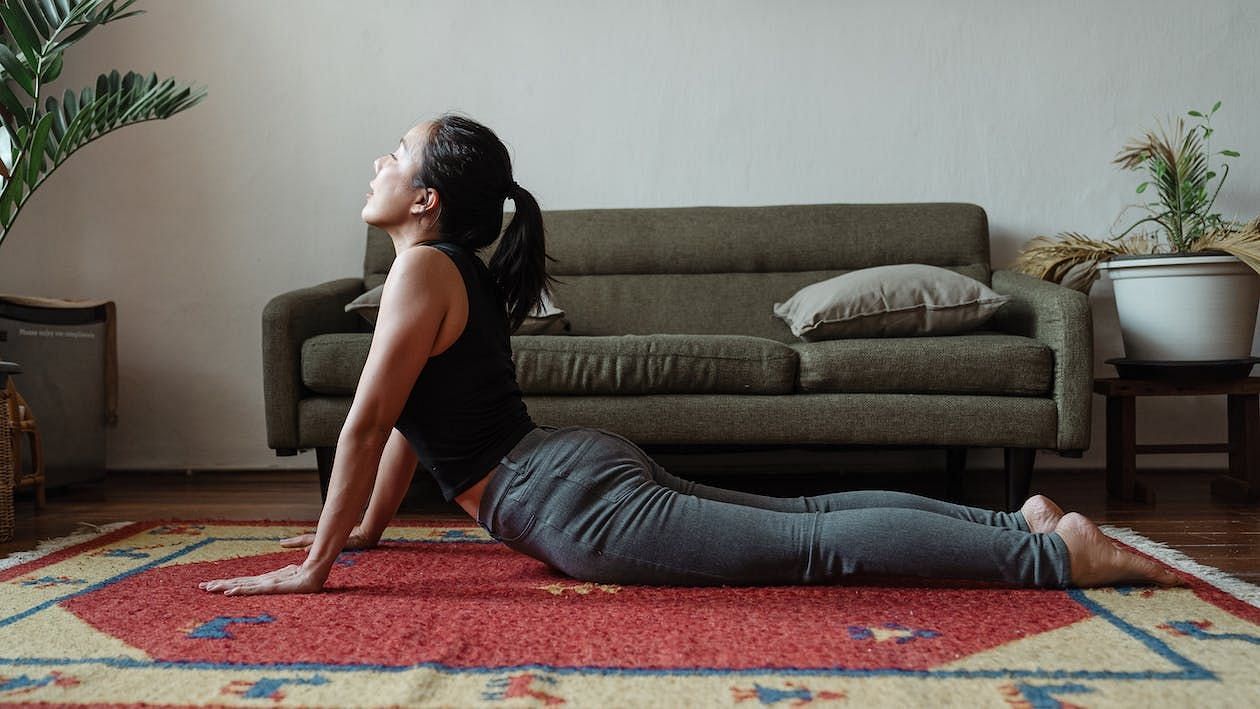From verywellhealth.com
Common sciatica symptoms include pain on one side of the body and in the back, buttocks, hips, and legs, pain that gets worse with sitting or standing, and pain that burns and stabs.
This article will cover common sciatica symptoms, rare symptoms, complications, and when to seek medical attention.
NickyLloyd / Getty Images
Frequent Symptoms
Pain associated with the sciatic nerve typically starts in the spine at the low back. The sciatic nerve is the widest and longest nerve in the body. It attaches to your spine and travels down to the buttocks, leg, and foot.
The term sciatica commonly describes radiating pain that inflammation or lumbosacral (lower back) compression of the nerve roots pushing into the sciatic nerve may cause. Any condition that causes trauma, damage, or compression in that region can lead to sciatica.
Symptoms on One Side of the Body
Sciatica typically affects one side of the body. This is because damage or trauma causes are confined to one nerve root, so you will feel pain going down to one side of the buttocks, the hip, or the leg.
Pain Down the Back, Buttocks, and Legs
Radiating pain is the hallmark of sciatica pain. It often presents as a shooting pain radiating in the lower back and down the leg.
Hip Pain
Hip pain might affect both sides of the body. It is especially common with conditions that affect the piriformis muscle beneath the gluteal (butt) muscles.
Hip pain also occurs when pain on one side forces you to shift your weight to the other side. This might lead you to experience pain in both hips.
Pain That Worsens With Sitting and Standing
Many people with sciatic pain might experience pain with sitting or standing for long periods. Sciatic pain worsens the longer you sit or stand. Movement or changing positions can sometimes reduce this.
Burning, Sharp Pain, or Pins-and-Needles Sensations
You may experience a burning feeling in the back, hip, or down the back of your leg. That feeling might be minor and disappear or spread. If it is not addressed, it will worsen.
You might also feel sharp or stabbing pain sensations down the lower back, hip, or leg. Some people also experience a pins-and-needles feeling or tingling or stinging anywhere along the sciatic nerve.
Numbness and Weakness
As sciatica pain increases, you might feel numbness anywhere along the sciatic nerve, from your back down to your feet. Severe numbness can affect the way you move your leg.
Weakness from sciatica can be felt anywhere along the leg—the entire leg, the knee, etc. The weakness might worsen if the underlying cause is not treated correctly.
Sciatica Causes
The symptoms of sciatica may vary based on the underlying cause.
Some causes of sciatica are:
- Herniated disc: The soft material in the centre of a spinal disc leaks and presses on a nearby spinal nerve root.
- A pinched nerve: A nerve is compressed.
- Piriformis syndrome: The piriformis muscle (behind the hip joint in the buttocks) irritates the sciatic nerve.
- Spinal stenosis: The spinal canal containing the spinal cord and nerve roots narrows.
- Spondylolisthesis: A spinal vertebra moves out of place.
- In rare cases, tumours and severe infections.
Types of Sciatica Pain
Sciatica pain has four types: neurogenic, referred, alternating, and bilateral.
- Neurogenic sciatica is often caused by nerve compression or a pinched nerve that leads to pressure along the spine.
- Referred sciatica is not related to a spinal condition. It is typically related to a muscle or joint problem.
- Alternating sciatica alternates between the legs when one side of the body is affected. It might be caused by arthritis of the sacroiliac (SI) joint. You have two SI joints connecting the spine to the pelvis.
- Bilateral sciatica is when both sides of the sciatica nerve are affected, leading to pain and symptoms in both legs and the buttocks. It is rare and typically affects one side more. It occurs when more than one disc is herniated or if there is disc degeneration.
Rare Symptoms
There are some rare symptoms of sciatica. These symptoms are typically more severe and may require immediate or emergency medical treatment.
Loss of Bladder and Bowel Control
In some cases, sciatica related to severe disc herniation in the lumbar spine may progress into a condition called cauda equina syndrome (CES).
You should contact a healthcare provider if you have sudden, unexplained bowel or bladder changes because these are early signs of CES. This could include involuntary bowel and bladder movements and difficulty passing urine.
CES also causes sudden pain and weakness of the legs, numbness of the groin, buttocks, genitals, and inner thighs (called saddle anesthesia), and sexual dysfunction.
CES occurs suddenly and can quickly get worse. It is a medical emergency for which you should seek immediate care. It typically requires emergency surgery to prevent neurological symptoms.
Worsening Neurological Symptoms
If you have damage to your sciatic nerve roots, you might experience worsening neurological symptoms requiring prompt treatment.
Neurological symptoms might affect one or both legs and might include the following:
- Numbness
- Tingling
- Weakness
- Abnormal sensations, such as a feeling that your skin is crawling
- Sensitivity to pain
Though these neurological symptoms might indicate sciatica is severe and require immediate treatment, you will likely not need surgery to treat the cause.
A healthcare provider will likely suggest epidural steroid injections (into the protective space around the spinal cord) or a nerve block to treat the underlying cause and reduce or stop neurological problems.
Treatment to Stop Permanent Damage
Treatment is essential because progressive neurological symptoms could lead to irreversible nerve damage.
Complications
Sciatica typically resolves with treatment within a few weeks. Your treatment options for the condition include physical therapy, medicines, and at-home remedies to manage symptoms. But sciatica can return and become chronic and recurrent.
Some people might experience progressive symptoms and complications.
Progressive neurological symptoms, such as numbness, tingling, and weakness, might indicate damage to the sciatic nerve roots. Left untreated, the damage can become permanent.
Additional complications of sciatica might include:
- Chronic pain
- Drop foot: A paralysis of the muscles that lift the front part of the foot
- Gait (walking) troubles
- Hyperalgesia(heightened pain sensitivity)
- Loss of bowel or bladder function
- Muscle loss
- Muscle weakness
- Paresthesia(pins and needles) in the affected leg
- Permanent nerve damage
- Sexual dysfunction
- Cauda equina syndrome
When to See a Doctor/Go to the Hospital
For many people, sciatica improves on its own within a few weeks. For others, it resolves with treatment of its underlying cause.
You should see a healthcare provider for new or worsening symptoms of sciatica or recurrent episodes. They can recommend treatments if symptoms do not resolve on their own.
You should seek immediate medical attention if you experience the following:
- Sudden or severe pain in one or both legs
- Weakness of one or both legs
- Trouble standing or walking
- Saddle anaesthesia
- Loss of bowel or bladder movements
Summary
Sciatica is pain that radiates along the path of the sciatic nerve. Your sciatic nerve travels from the lower back through the hips and buttocks and down each leg.
Sciatica symptoms include pain on one side of the body and in the back, buttocks, hips, and legs, pain that worsens with sitting or standing, numbness, and weakness. For most people, sciatica pain improves within a few weeks with or without treatment.
Untreated sciatica can lead to progressing symptoms, severe leg weakness, bladder or bowel changes, or even a severe neurological condition called cauda equina syndrome. Contact a healthcare provider for new or worsening symptoms.
You should seek emergency medical care if you experience severe leg pain or weakness, problems standing or walking, bladder or bowel problems, or saddle anesthesia.
:max_bytes(150000):strip_icc():format(webp)/back-pain-GettyImages-1290703461-864046f8df124307a8ea9fb797f08b98.jpg)



